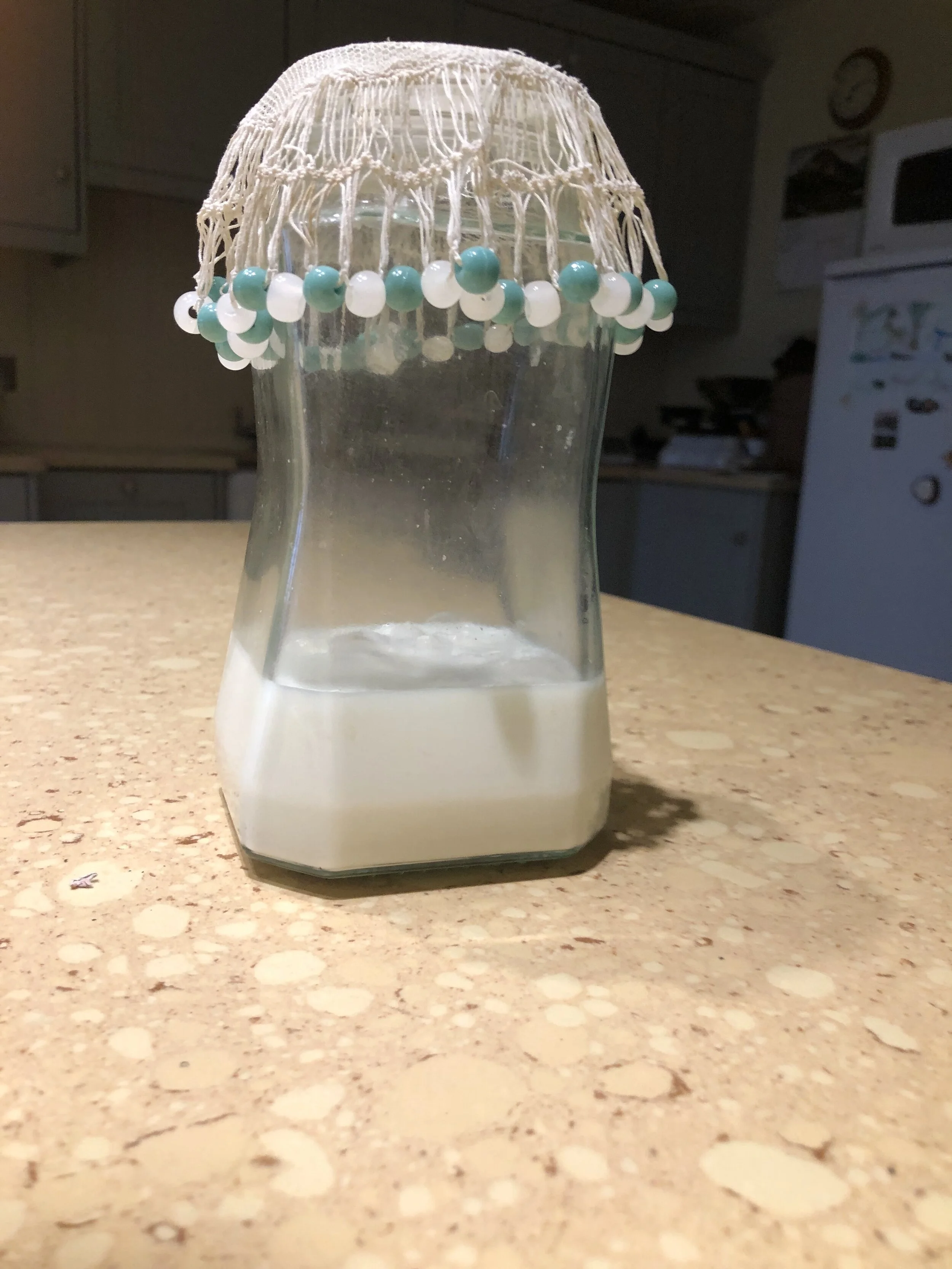KEFFIR
I ordered some keffir and as soon as I saw it I was taken back to school dinners when meat and two veg were the order of the day and you HAD to eat everything on your plate. Milk puddings were a staple, and if I said those words now I expect there would be a Marmite reaction – people either loved them, or hated them.
They reached their zenith in the 1940/50/60s when they were a regular feature on school dinner menus, before yoghurt cartons became an easier option. Rice pudding*** was the most frequently served and at its best was a thing of beauty with a crisp, nutmeg skin and sweet, creamy taste. It has stood the test of time and is now found in red rosette-starred restaurants, often tarted up with a few exotic fruits (an idea which would have made our grandmothers shake their heads in bewilderment).
Semolina was next most popular. Here I stopped; I had no idea what semolina was made from: ground wheat, said the Oxford Dictionary. Semolina looked like a smoother, paler version of porridge but had a more pleasant taste and was almost always accompanied by a dollop of red jam. It was very similar to the flour and water paste used to make classroom papier mache and would have done a very successful job sticking wallpaper to walls. One of my children absolutely loved it and one of the dinner ladies, who had a soft spot for him, always gave him second helpings and extra jam.
Next most common was tapioca, known to children everywhere as frogspawn, which gives you an idea of its appearance and taste. I looked that up and found it is made from the starchy tuberous roots of the cassava plant. (I don’t what a cassava plant is but I’m not going to look – it’s too easy to lose hours in a dictionary.) But how was it made into little balls? And why? Whatever the reason it was not much liked.
At the bottom of the list was sago, tapioca’s big brother, with its large globules that had a nasty, chewy, gloopy texture. I’m a lover of any pudding but even I curl my lip at the thought of sago. Ugh! Apparently it is made from the powdered pith of the sago palm (who knew that existed!) I’m pretty sure Marcus Wareing won’t be featuring that on his menus any time soon.
I was going to write about how I’m now a keffir convert but puddings claimed me!
***This is not to be confused with the tinned variety that claimed to be the food of the gods, but really tasted gooey and nasty, and nothing like the real thing.




